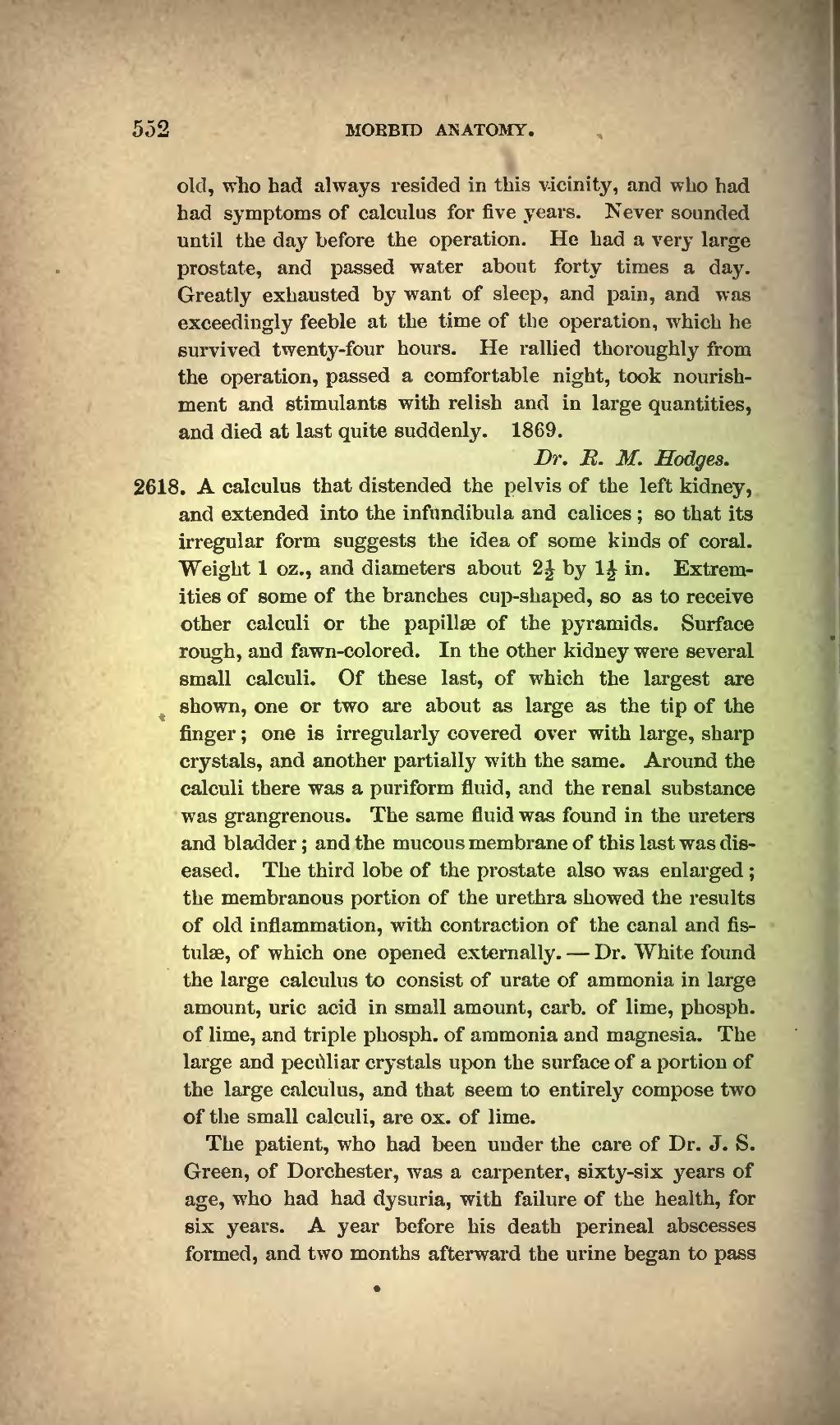552 MOBBID ANATOMY.
old, who had always resided in this vicinity, and who had had symptoms of calculus for five years. Never sounded until the day before the operation. He had a very large prostate, and passed water about forty times a day. Greatly exhausted by want of sleep, and pain, and was exceedingly feeble at the time of the operation, which he survived twenty-four hours. He rallied thoi'oughly from the operation, passed a comfortable night, took nourish- ment and stimulants with relish and in large quantities, and died at last quite suddenly. 1869.
Dr. E. M. Hodges.
2618. A calculus that distended the pelvis of the left kidney, and extended into the infundibula and calices ; so that its irregular form suggests the idea of some kinds of coral. Weight 1 oz., and diameters about 2 by 1 in. Extrem- ities of some of the branches cup-shaped, so as to receive other calculi or the papillae of the pyramids. Surface rough, and fawn-colored. In the other kidney were several small calculi. Of these last, of which the largest are shown, one or two are about as large as the tip of the finger ; one is irregularly covered over with large, sharp crystals, and another partially with the same. Around the calculi there was a puriform fluid, and the renal substance was grangrenous. The same fluid was found in the ureters and bladder ; and the mucous membrane of this last was dis- eased. The third lobe of the prostate also was enlarged ; the membranous portion of the urethra showed the results of old inflammation, with contraction of the canal and fis- tulse, of which one opened externally. Dr. White found the large calculus to consist of urate of ammonia in large amount, uric acid in small amount, carb. of lime, phosph. of lime, and triple phosph. of ammonia and magnesia. The large and peculiar crystals upon the surface of a portion of the large calculus, and that seem to entirely compose two of the small calculi, are ox. of lime.
The patient, who had been under the care of Dr. J. S. Green, of Dorchester, was a carpenter, sixty-six years of age, who had had dysuria, with failure of the health, for six years. A year before his death perineal abscesses formed, and two months afterward the urine began to pass
�� �
